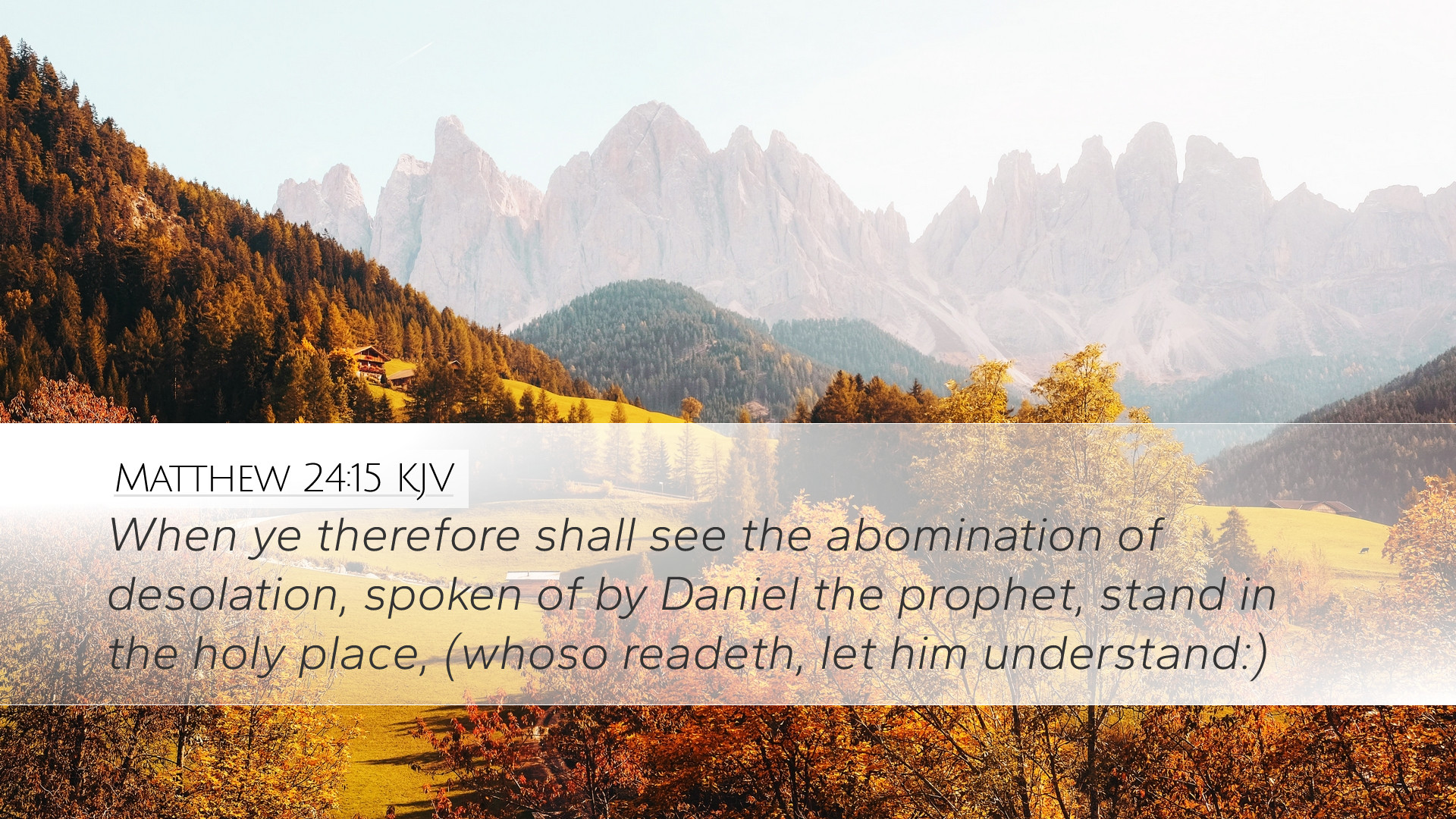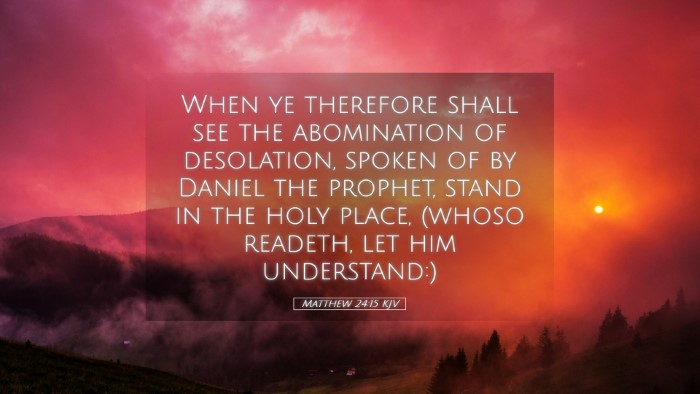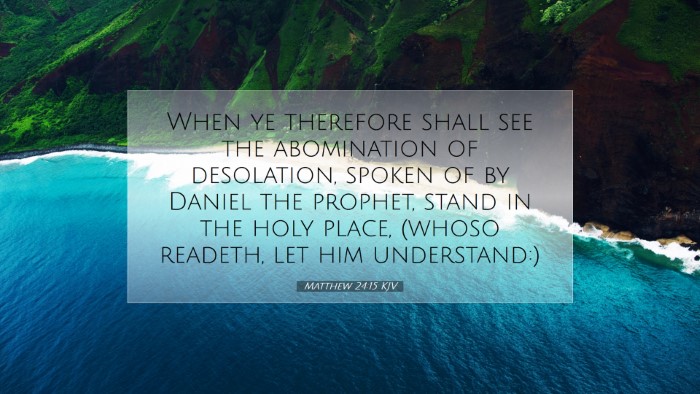Commentary on Matthew 24:15
Bible Verse: "When therefore you shall see the abomination of desolation, spoken of by Daniel the prophet, stand in the holy place, (whoso reads, let him understand.)" - Matthew 24:15 (KJV)
Introduction
This prophetic utterance of Jesus serves a dual purpose, relating both to the immediate circumstances surrounding the destruction of Jerusalem and the broader eschatological events concerning the end times. The term "abomination of desolation" is drawn from the book of Daniel and refers to a desecration of the holy place, which captures the essence of spiritual corruption.
Exegesis and Analysis
Historical Context
Matthew Henry emphasizes the necessity of understanding the historical context surrounding Jesus’ prophecy. During the time of Christ, the temple in Jerusalem represented the center of Jewish worship. The prophecy speaks to a forthcoming profound crisis wherein the sacredness of the Temple would be assaulted.
Interpretation of the Abomination
Albert Barnes articulates that the "abomination of desolation" was initially fulfilled by the actions of Antiochus Epiphanes, who desecrated the Temple by placing a statue of Zeus within it. This act signifies rebellion against God, marking a pivotal moment for Israel’s faith. Jesus is thus warning His followers of a similar desecration that would come during the Roman siege of Jerusalem.
Significance of the 'Holy Place'
Adam Clarke notes that the "holy place" refers explicitly to the Temple itself. The mention of a place where divine worship occurs highlights the gravity of its defilement. The intrusion into this space would not only offend Jewish sensibilities but also indicate the departure of God's favor from that establishment.
Theological Implications
Forewarning and Preparedness
This verse contains a call to vigilance and discernment exposed in the parenthetical statement, "(whoso reads, let him understand.)" Here, Jesus emphasizes the importance of spiritual comprehension. Matthew Henry remarks that understanding these prophecies is crucial for believers to prepare adequately for the trials ahead.
Eschatological Dimension
Albert Barnes suggests that the "abomination of desolation" will likely reappear in the form of the Antichrist or a similar figure who will rise during the end times, further emphasizing the need for readiness among believers.
Pastoral Application
Contemporary Relevance
Adam Clarke encourages modern-day pastors and theologians to draw practical applications from this verse. In a world increasingly hostile to the principles of Christianity, believers must cultivate a discerning spirit to recognize false teachings and spiritual abominations that may sully the 'holy place' of their hearts and communities.
- Vigilance: Believers must remain alert to spiritual threats that challenge their faith.
- Encouragement: The inevitability of crises can lead to despair, but understanding God’s sovereignty provides hope.
- Community Support: Encourage believers to support one another in their pursuit of holiness, safeguarding the church against moral decay.
Conclusion
In summary, Matthew 24:15 serves as a pivotal warning about spiritual integrity and preparedness. As noted by Matthew Henry, the fulfilment of Christ’s prophecy regarding the abomination of desolation emphasizes both historical and future implications for God’s people. It serves as a clarion call for vigilance, encouraging believers not only to understand the signs of the times but also to fortify their spiritual lives against the encroachment of evil. Therefore, as we reflect on this verse, let us commit to living in anticipation of Christ’s return, fostering a community rooted in understanding and readiness.


